Digital 52 1️⃣5️⃣ - 24/7 Coworking, Automating the entire operational strategy and growing: the story of La Permanence.

Discover the story of La Permanence, a coworking space that began as a resource for students and has now expanded into a series of innovative, automated workspaces throughout Paris.
Business Models - Innovation - Utilizing Technology
You can read the full story of La Permanence on page 165 of "Around The World in 250 Coworking Spaces".
Operating a coworking space is a complex undertaking. While it may appear to be simply providing 'tables and desks', in reality, it requires a range of processes, tools, and technology to run smoothly and enable community managers to focus on their primary role: fostering human connections. In our travels, we came across a coworking brand that particularly impressed us with its seamless automation of the entire user experience. While it was initially targeted at students, it quickly gained popularity among those seeking an affordable, beautifully designed, and easily accessible coworking space. It's now your turn to meet La Permanence and learn about its journey through the years through our latest conversation with co-founder Manesse Clam.
➡️ A little refresher
Who’s behind the featured space?
Meet Manesse Clam and Zouhir Bahij.
“We had known each other for a while before I started the project. Zouhir had already been heavily involved even though he wasn't directly a part of it. When he left his job, it seemed like a natural fit for us to work on the project together.”
➡️ Key Figures
- Opening year: 2017
- Size today: 3 spaces across Paris
➡️ A little tour around La Permanence

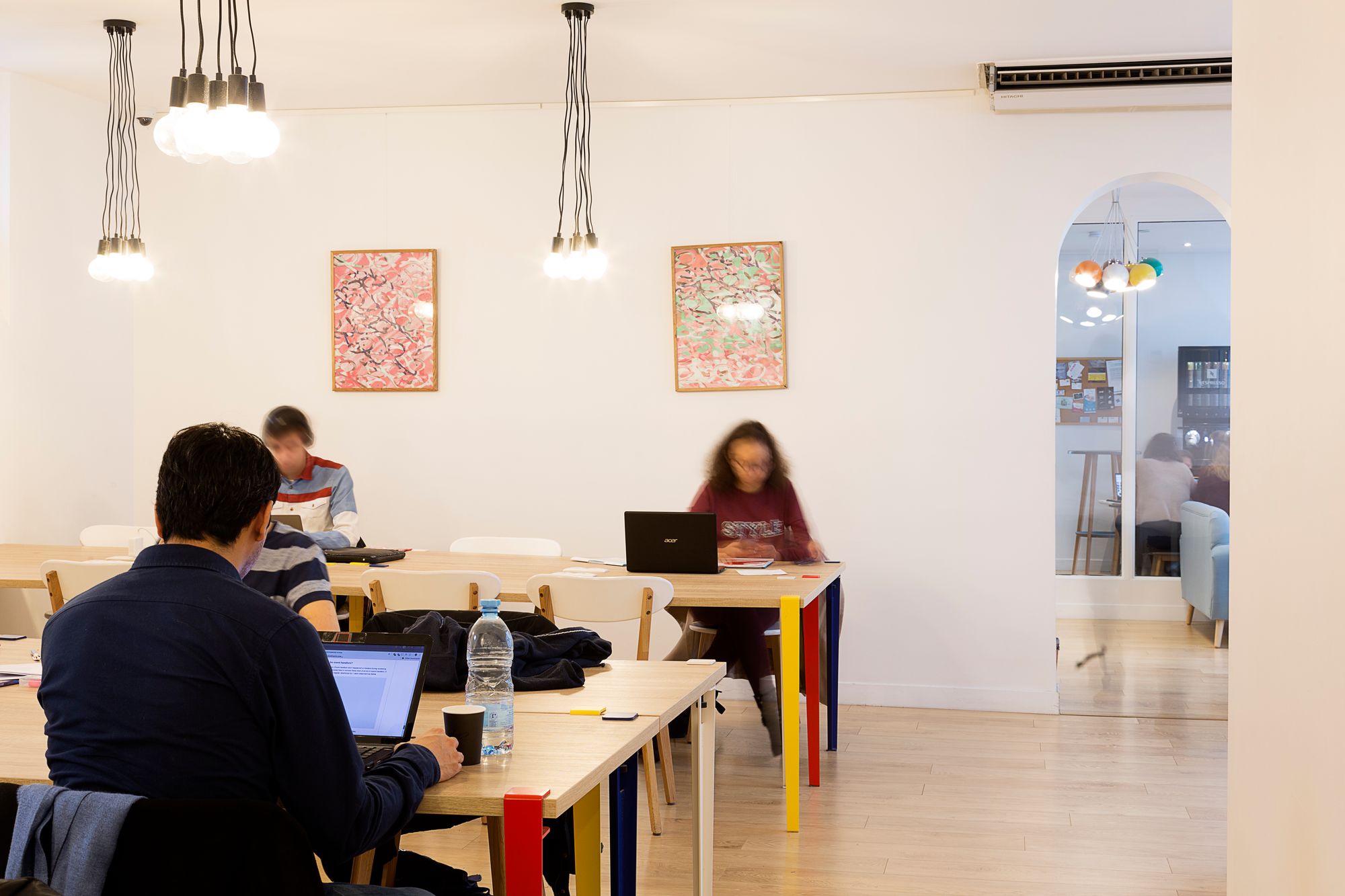
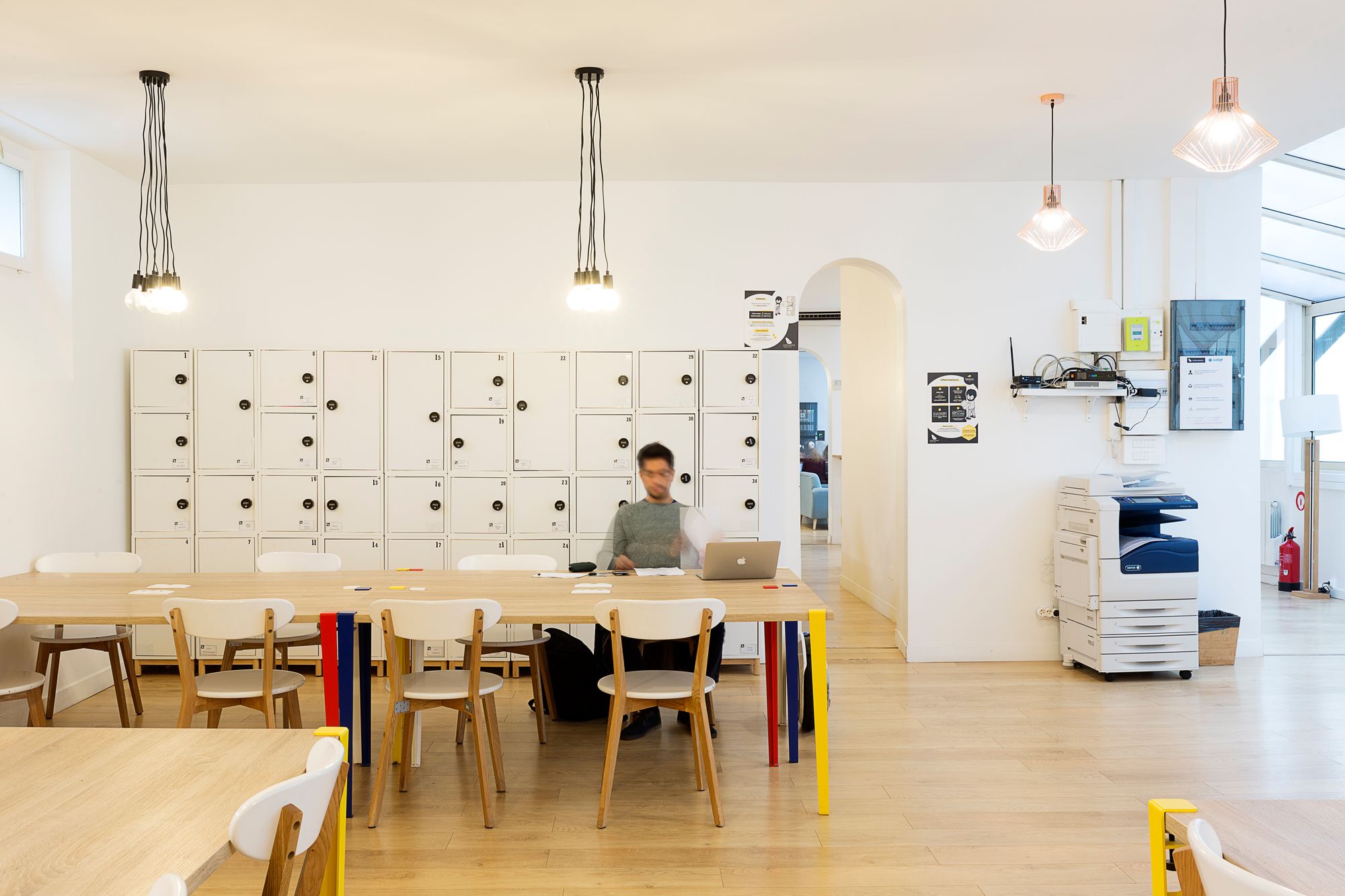
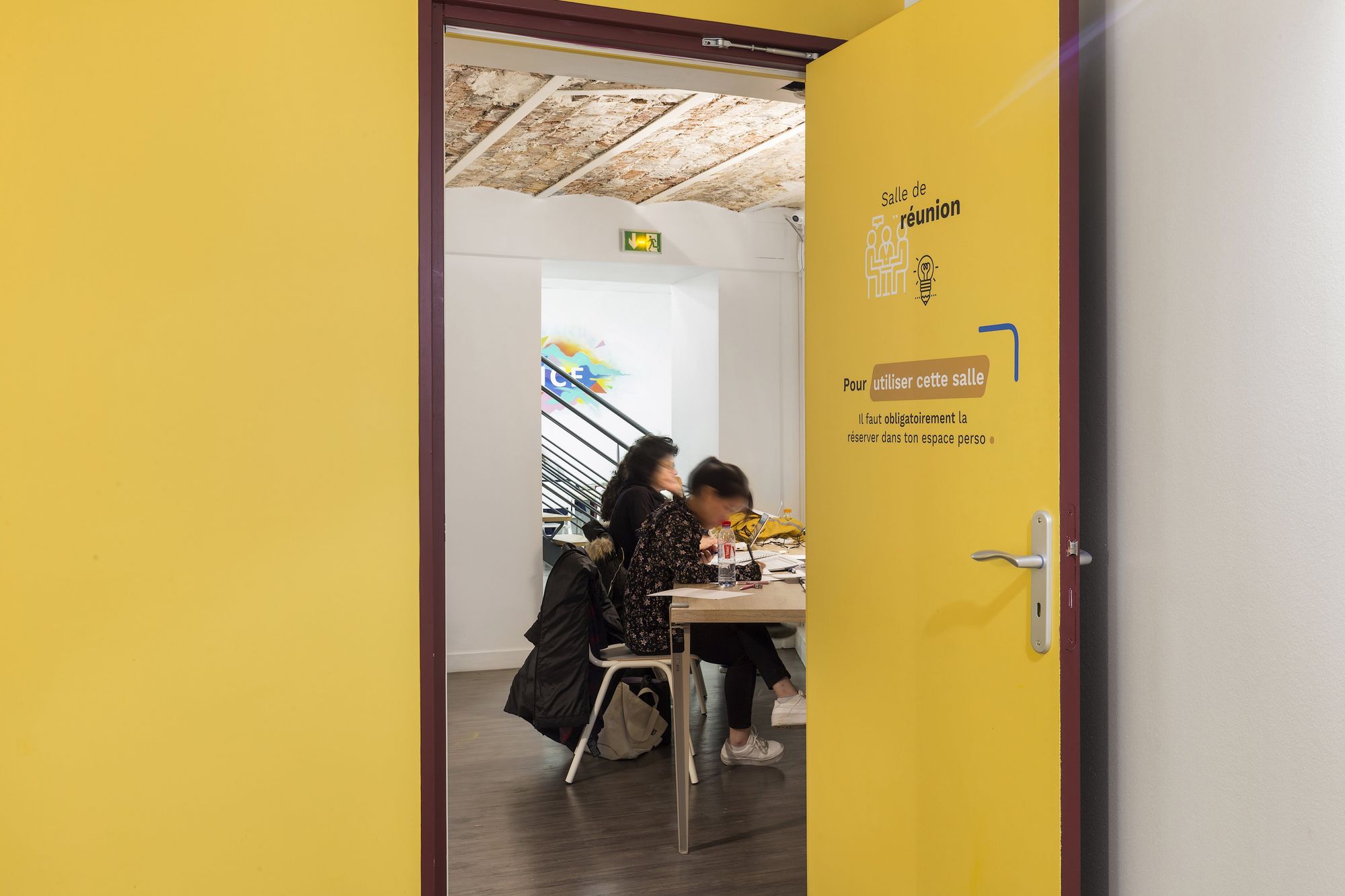
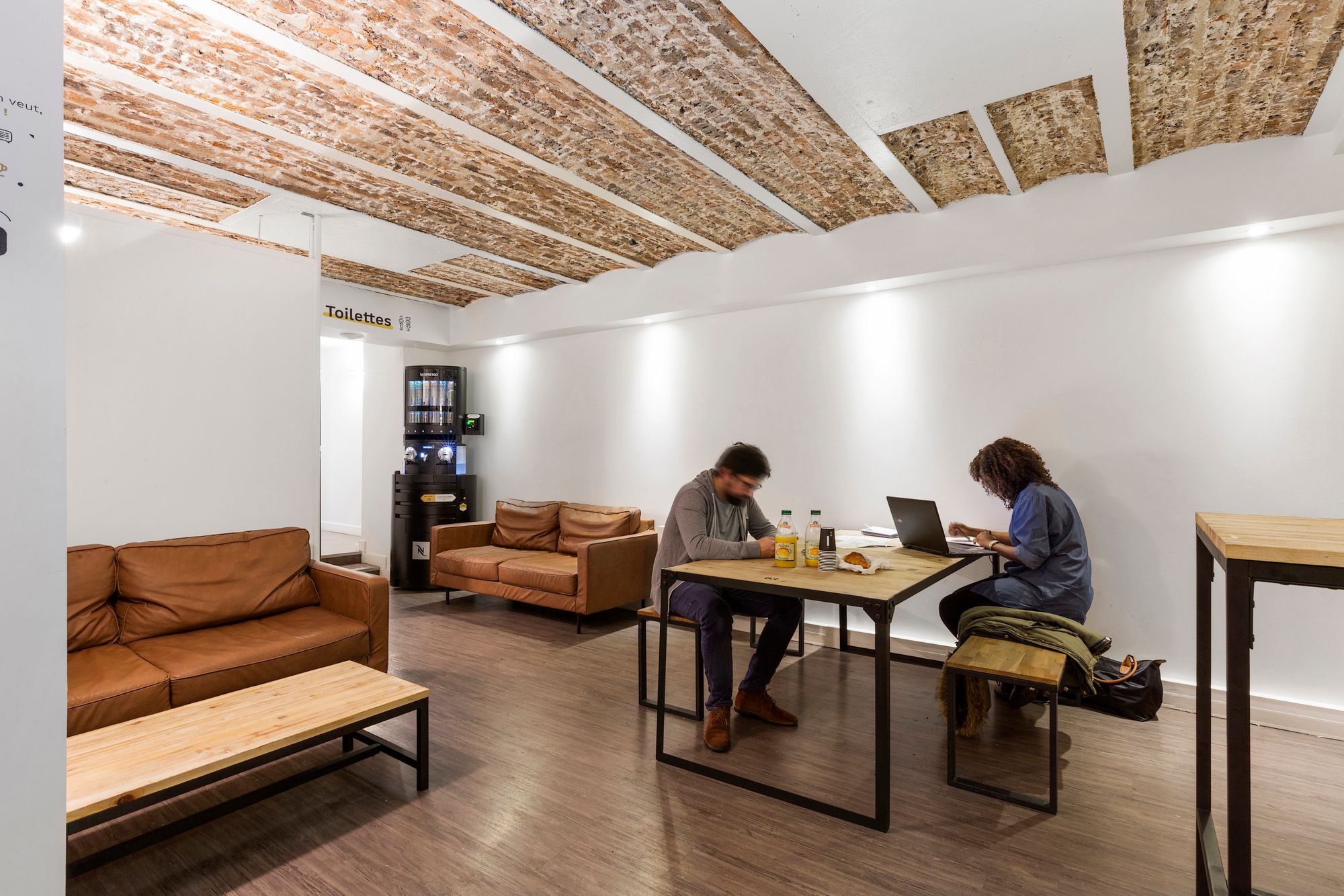
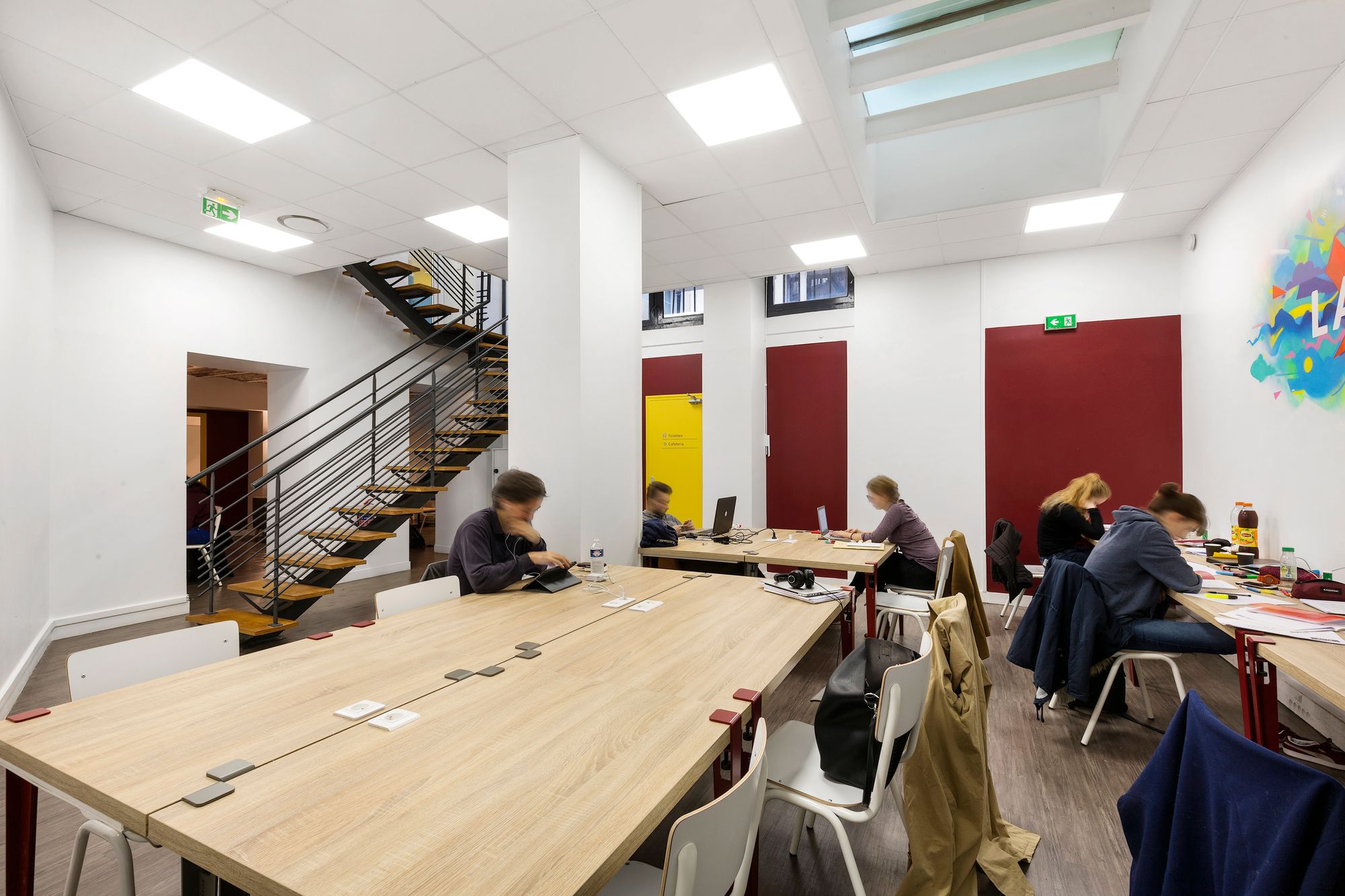

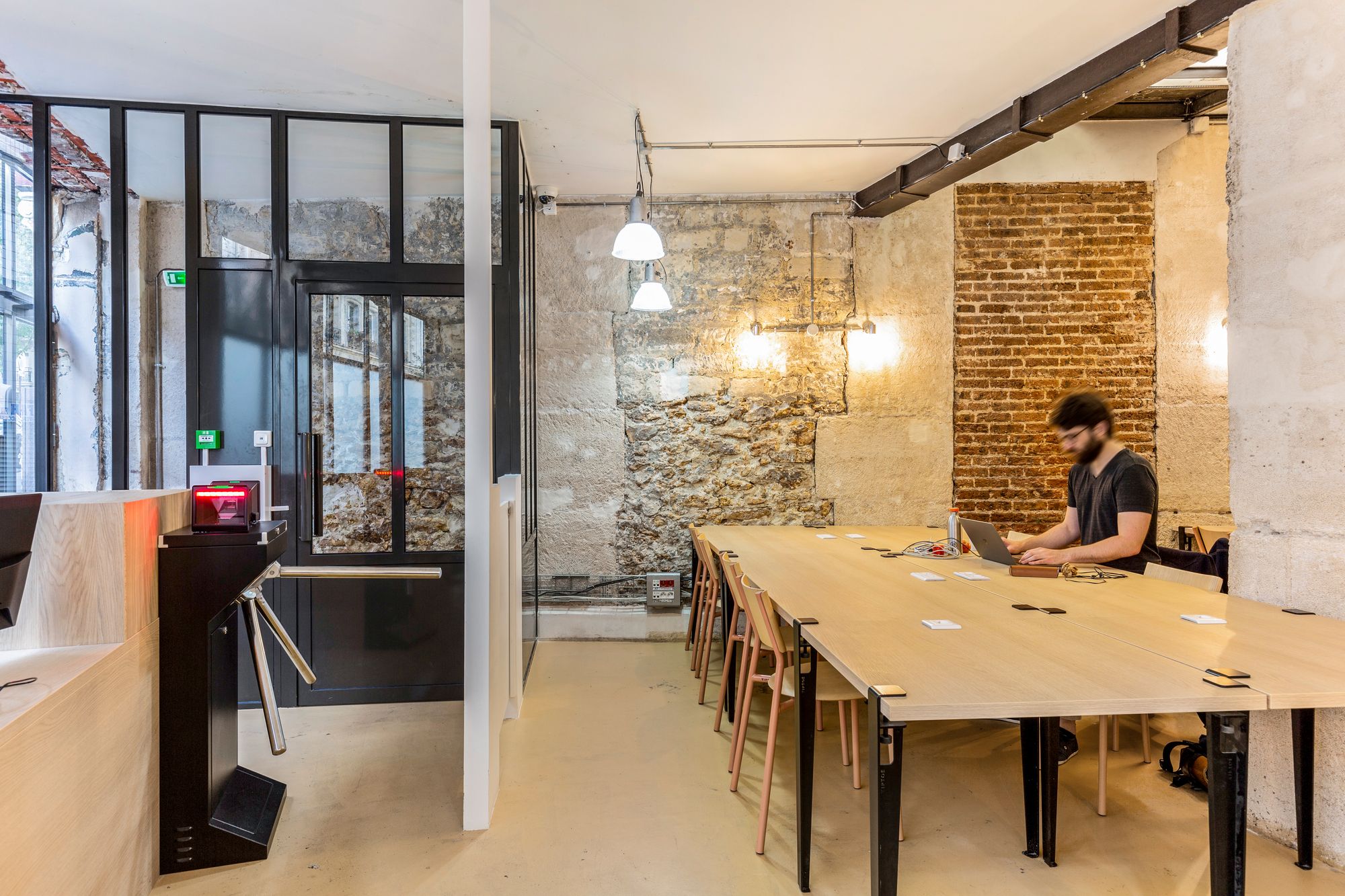
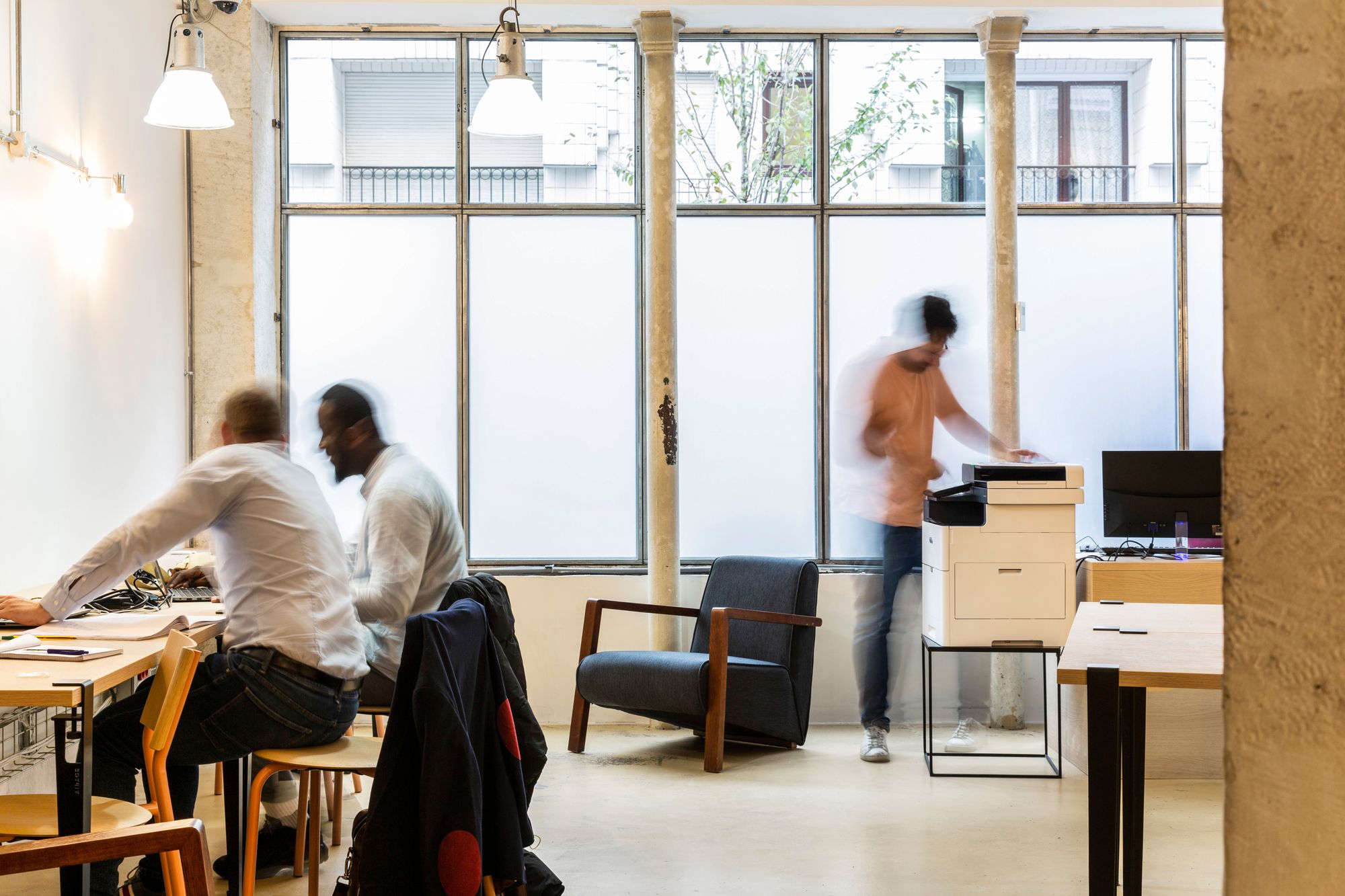
➡️ Behind-the-scenes
Things you didn't read in aw250cs.
Little funny anecdote: when the pandemic forced a temporary closure on March 15, 2020, we didn't have the keys and didn't know how to close because it had never happened to us before.
Manesse Clam, Co/Founder La Permanence
➡️ La Permanence Today
What has happened at La Permanence since the publication of "Around The World in 250 Coworking Spaces"? A great deal, to say the least. Before the end of 2022, I contacted Manesse to inquire about their experiences navigating the past few years as a team and the impact of the pandemic on their spaces. You will soon discover that La Permanence has undergone significant changes, adopting the lessons and new realities brought about by the pandemic. From expansion to contraction, from automation to experimentation, there is much to be learned, so please continue reading.
💫 Growing, Decreasing in size, Experimenting.
💬 I’d like to start by asking you: what’s new at La Permanence since the last time we spoke?
Here in France, in Paris, we had to close our spaces for two months between March 15, and May 15, 2020. The reopening went well, we immediately returned to pre-COVID-19 levels. We had the feeling that the focus on teleworking, third places, and coworking spaces was stronger than it had been before. The office was suddenly no longer the only place where employees were welcome.
Moreover, we also felt that the economic factor was in our favor. We understood that a lot of companies were potentially going to abandon office space and reduce their size, which would also have opened up possibilities for spaces like ours. But, towards the end of 2020, we realized that this pandemic was not a one-time event and was going to continue for an extended period. Our optimism faded, which had a direct impact on our spaces.
In the euphoria of summer 2020, we set out to develop as planned before COVID, so we opened a space in Lyon, and in time to sign it and do the work, we opened in January 2021. It's a space that we meticulously prepared. It was also the culmination of the three previous spaces we had in Paris, with a much better thought-out concept and larger surface area.
But it turned out the timing was not ideal. We had a difficult year in 2021, but things improved in 2022. We started to gain an audience, but perhaps it was a little too late and we didn't have the resources to maintain the space, so unfortunately we had to close it quite recently, on August 31, 2022.
💬 In our initial interview, we talked a little bit about the experience you created at La Permanence, where most of it is automated. How did you guys design it when you started, and how has the experience changed over the years?
La Permanence was originally designed to serve students, with an emphasis on providing an affordable, 24/7 space. To meet this goal, we developed our system, using automation throughout the entire process, from registration to access control and billing. Each member receives a QR code that manages access and triggers billing.
Automation was essential for allowing people to utilize the space at all hours.
Today, while we still serve a large number of students, we also have a significant percentage of professionals using the space. As a result of the automation, our on-site staff is able to focus more on personal interactions with users rather than operational tasks.
💬 When La Permanence started, you were solving a real problem for students in Paris, which was accessing a place to study whenever they wanted. Why was this 24/7 type of access so important to you?
Students often have irregular schedules that don't align with traditional office hours, with classes and other commitments taking up most of the day. This can make it difficult for them to find a place to study during their free time, especially since libraries tend to close early.
At La Permanence, we recognized this problem and created a solution by offering 24/7 access to a workspace. This allows students to come and work at any time, whether it's early in the morning or late at night.
Little funny anecdote: when the pandemic forced a temporary closure on March 15, 2020, we didn't have the keys and didn't know how to close because it had never happened to us before.
While the majority of our members are no longer necessarily students, some professionals do utilize the space during evening and nighttime hours for side projects. We attract young entrepreneurs looking for a cost-effective, convenient, and stylish space.
💬 You developed a product out of this 24/7 philosophy called coworkingsaas, can you talk to us about it? What pushed you to make it a product?
We developed a unique technological platform for our coworking space that we believed could be beneficial for other coworking operators. The autonomy, security, and ease of use offered to our members through this technology have become a strong differentiator, and it was not created solely for economic reasons but rather to enhance their experience.
That's why we've packaged it as a SAAS (software as a service) product for other operators to make it their own. By doing this, we aim to assess the demand for the solution and guide its future development.
💬 With all the technology integrated into your coworking space, you must have interesting datasets on space usage. Can you tell me when the space is most frequently used at the moment? Did this data change after the pandemic?
Yes, we have a clear understanding of what is happening at our coworking spaces.
For example, we can track attendance patterns throughout the day and month. We can see the busiest months, days, and times, as well as the busiest days of the week and seasons. In terms of registration volume, we can identify people's preferred days.
This has changed significantly due to COVID-19, as before the pandemic, the registration volume was relatively stable with only minor variations. Now, we see a trend where people register during the first half of the month, and attendance drops after the 15th. We are not sure why this trend has emerged, but it is something we need to consider.
When we have large gaps in attendance, it becomes challenging to optimize and go against mass habits. For example, many companies offer two days of telecommuting per week, usually Monday and Friday. However, Tuesday is now a very busy day for us because it is the start of the “work week” (aka not at home) for many people.
It is difficult to operate a space that you pay for every day, year-round when you have two days that are slow and others that are busy. Additionally, we know that spaces that are very busy in terms of customer satisfaction often do not provide a good experience because attendance tends to go against the wave.
The more people there are in the space, the less satisfied they tend to be, as Jean-Paul Sartre said, "hell is other people”.
💬 You now have 3 spaces across Paris. Can you talk to us about your growth strategy? How did it happen? What were the signals that showed you were ready to grow?
That’s a very good question.
When my partner and I opened our coworking space, we were already satisfied with its performance. However, we quickly wanted to grow.
At the time, I think I made more impulsive decisions rather than calculated ones. In retrospect, I don't think I even used Excel to try and see how I could open a second space. Overall, I had a strong desire to open a second location and felt that our customers loved what we offered and even suggested we open more. That was a major motivator for me. I had some financial resources and ideas, and after visiting potential spaces, it just happened.
Looking back, it wasn't a very logical or well-planned process. It was driven by desire and emotion. However, we also had confidence in our space and the figures were good, which was essential.
💬 Then was it the same thought process from 2 to 3?
It's different because we suddenly had a lot more financial data to work with. We were able to identify the type of space that is necessary for our business model to be successful. We didn't really do this for the second space. We had an idea of the constraints, but we took a more strategic approach with the third space. We looked at a map, the types of spaces available, and the rental rates, etc. From the second to the third space, we gained confidence and had good occupancy rates.
💬 What did you find more difficult operationally speaking? Go from 1 to 2 or from 2 to 3?
When we opened the third space, we were still using an artisanal approach, as we had done with the first and second spaces. I was very hands-on with operations and if I was present, things went smoothly, but if I wasn't there, things didn't run as well. I started to feel a physical and emotional limit. That's when we decided to optimize our operations.
The leader should be able to step out of the operational chain and not be necessary for the spaces to function. If they are away for a week or two, everything should still run smoothly.
To achieve this, we implemented processes in all areas to find this autonomy. We realized that the best way to find a stable rhythm is to address all types of situations, even those that occur rarely or have a low frequency. By addressing these scenarios and setting up more "industrial" processes, we became more organized. It feels a lot more peaceful and satisfying to operate, and we are more confident. We no longer wake up in the morning worried about what could go wrong that day, because we have solutions for everything. Of course, there can always be major disasters, but from the third space on, we were prepared for them.
➡️ Reflections on building La Permanence
💬 What has been your biggest learning out of bringing to life AND growing La Permanence?
That's a very good question.
I think, like many people in our industry, the Covid pandemic has been a tough test. For us who founded our company in 2017, the Covid pandemic has been almost half of the entire life of the company.
It has brought failures and difficult times. It has also been a lesson in humility, as we realized that we don't know as much as we thought and still have a long way to go in terms of mastering everything. There are always unexpected challenges that can arise and call into question everything we have done. We truly experienced this firsthand.
In addition to economic challenges, it has been difficult to manage 3 spaces where masks are required. We have had some difficult moments with customers and exhausted employees. These were not experiences that we expected to have. The pandemic has been a tough ordeal, but it has also given us a greater sense of humility and the realization that, while we may be doing things relatively well, others are likely doing even better.
We are striving to do good things on a small scale and recognize that we have much to learn. Many alternative models may be more effective, from which we can draw inspiration to grow.
💬 What advice would you give to someone who is considering opening a coworking space?
Coworking is an industry with a wide range of concepts, from large to small players.
In my opinion, the most important thing for someone who wants to open their own space is to find their unique difference and to have a sincere and distinctive proposal.
We have learned this lesson firsthand. When we started working with and for students, we truly believed in our concept and it was a great success. People responded well to the idea. Although our concept has evolved, I think it was this initial enthusiasm that carried us through the start. We are passionate about what we do and are willing to take on the challenges that come with it.
So, it's important to have your personal touch, your approach to work, and how you interact with people. This will help you stand out and appeal to a particular audience.
💬 If you could chat with coworking operators now, what would you like to ask them?
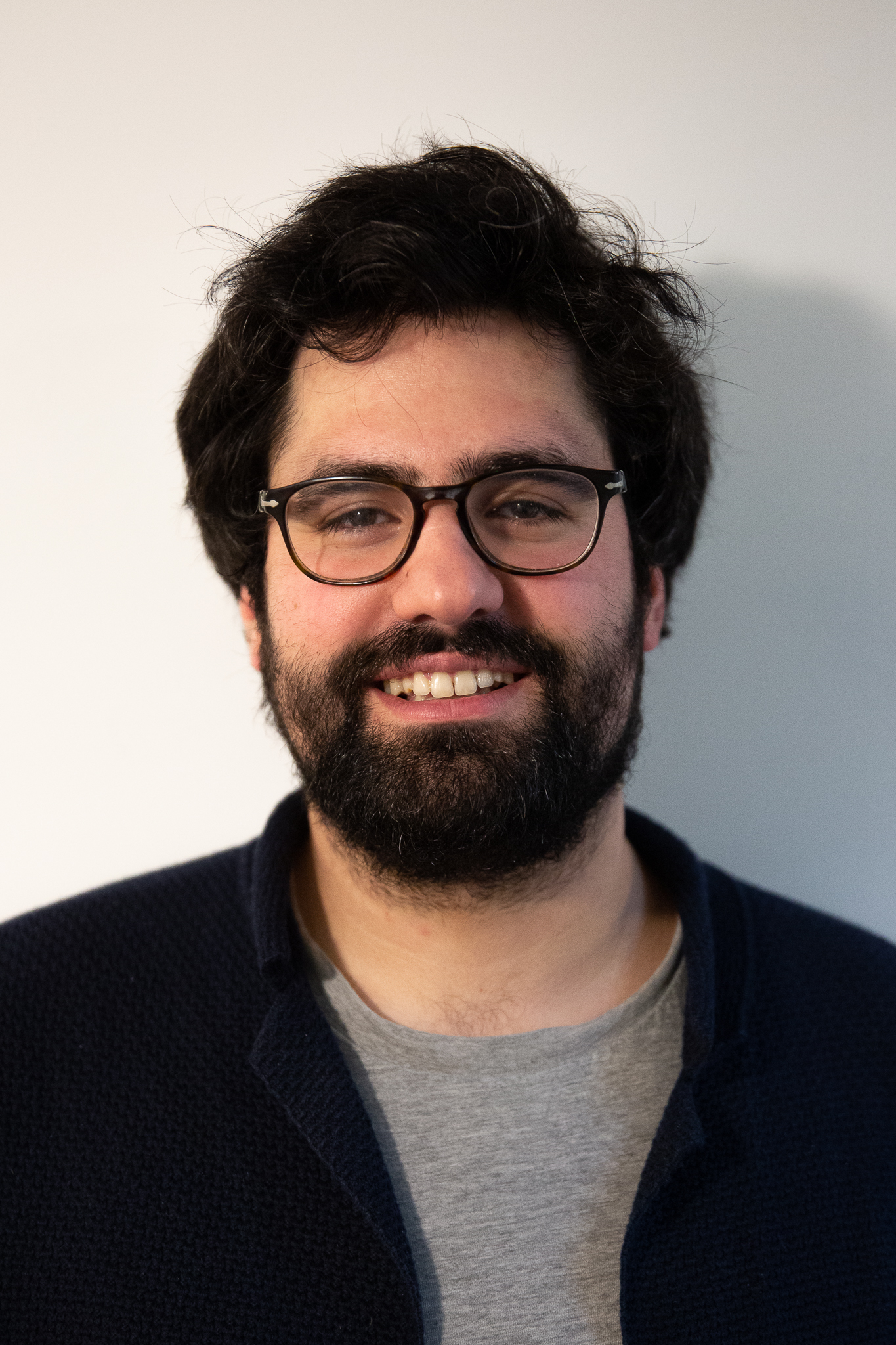
💬 And if you could chat with coworking members?
What makes them choose one coworking space over another?
It is very difficult to measure and understand this factor precisely. We see people who are drawn to a certain coworking space without necessarily being able to explain why. I would like to identify a few main criteria that might influence someone's decision to choose one space over another, aside from price.
Right now, thinking about it with you, I would even like to ask the question to my loyal customers.
💬 Last but not least, what’s your biggest dream for La Permanence?
To grow, we would like to have plenty of space everywhere. I'm not sure if my answer is particularly original, but the Covid pandemic has strengthened our belief in our product and we want to reach a wider audience.
Join us on Discord to discuss the story of La Permanence!

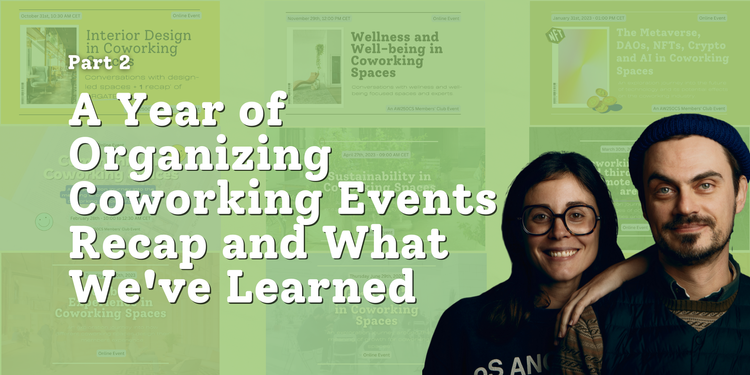




Member discussion